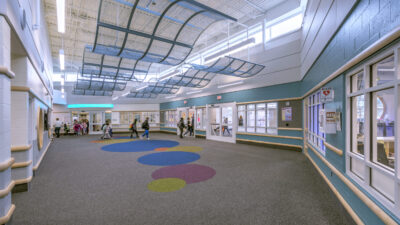In the information age, data centers are one of the most critical components of a facility. If the data center isn’t reliable, business can’t be done. Fire and life safety issues are tackled here.

Respondents
- Kevin V. Dickens, PE, LEED BD+C, Mission critical design principal, Jacobs Engineering, St. Louis
- Terrence J. Gillick, President, Primary Integration Solutions Inc., Charlotte, N.C.
- Bill Kosik, PE, CEM, BEMP, LEED AP BD+C , Principal data center energy technologist, HP Technology Services, Chicago
- Keith Lane, PE, RCDD, NTS, RTPM, LC, LEED AP BD+C, President/CEO, Lane Coburn & Associates LLC, Bothell, Wash.
- David E. Wesemann, PE, LEED AP, ATD, President, Spectrum Engineers Inc., Salt Lake City
CSE: What trends and events have affected changes in fire detection/suppression systems in data centers?
Wesemann: The highly sensitive air sampling systems are very common for data centers due to their early detection of potential fires. This coupled with a gaseous clean-agent type suppression system helps to avoid the risk of introducing water from wet sprinklers into the data center (although many codes and jurisdictions still require traditional sprinkler systems even if clean agent suppression systems are present).
Gillick: To varying degrees, philosophical, code, and insurance trends all have affected changes in life safety/fire suppression systems in data centers. From a fire detection standpoint, we are seeing the deployment of early detection warning systems, such as very early smoke detection apparatus (VESDA), which detect the elements of combustion at the atomic level and indicate a pending fire. Another area in which we’ve seen significant change is within the data center enclosure, where we are being asked to commission various combinations of water, dry-pipe reaction, and gaseous suppression systems depending on the facility. Additionally, many of the medium- and high-density rack enclosures require fire suppression systems within the enclosure, which vary by local jurisdictions and code requirements.
CSE: How have the costs and complexity of fire protection systems changed in recent years?
Gillick: The cost and complexity of dry-pipe and gaseous systems have increased in recent years. As a result, some owners are selecting wet-pipe systems with the approval of their insurance carriers.
CSE: What changes in clean agent suppression systems have you seen in data centers recently? What do you see changing in the near future?
Wesemann: FM200 seems to be a popular suppression system still. I’ve seen some nitrogen misting systems being used.
Gillick: Due to the cost of clean agent suppression systems and the storage requirements of the gas canisters, owners are considering the volume of space in which they want to deploy these systems: full flood of the white space area between the ceiling grid and the raised floor, within the raised floor plenum or ceiling plenum, or all of the above? We are starting to see the emergence on the market of new gases, fostering the retrofit or replacement of some of the legacy systems. Overall, I do not see owners deploying clean agent systems as extensively now as they did in the past, and that trend may continue in the near future.
CSE: What are some important factors to consider when designing a fire and life safety system in a mixed-use building (data center within an office building, for example)? What things often get overlooked?
Wesemann: In mixed-use buildings, data centers have to be designed as stand-alone facilities with their unique requirements for fire detection and suppression, but then report to the main building fire alarm system. Likewise, the building system needs to report to the data center. Sometimes the “overlay” of the two systems (which can be the same system with two functions) gets confusing, especially if the same signal tone is used to annunciate both types of alarms (those generated within the data center and those generated in other areas of the mixed-use building).
Gillick: There are two very important factors to consider in the context of fire and life safety in a mixed-use building: first, design of a dedicated MEP system for the data center, which will enable it to continue operation as a stand-alone structure in the event of a fire or other catastrophic event; and second, development of contingency plans to protect the space if code requires that a fire alarm condition must unlock all doors. You’d be surprised how often these factors are overlooked until someone has observed the consequences of a fire department shutdown of MEP services to the entire building, or intruders entering unlocked and unprotected doors.
CSE: In a mission critical facility such as a hospital, what unique emergency notification or mass notification systems have you specified, and what challenges did you overcome?
Gillick: More than in any other type of mission critical facility, a hospital requires integration of many layers of internal communication systems—emergency mass notification systems, fire alarm notification, security, paging, nurse-call, handheld online records, etc.—with the building telecommunication and security systems. The challenges include correct zoning of the announcements and coordination with architectural design for signage, assembly places, shelter-in-place areas, and so forth.
Wesemann: Voice annunciation systems with the ability to broadcast prerecorded and live messages are often used. The biggest challenge with the voice systems is the NFPA intelligibility requirements that are difficult to predict using traditional design methods and rules of thumb. We often have to involve our acoustical engineer with computerized design and modeling tools to ensure intelligibility.



